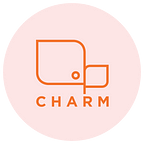An exclusive look inside the market validation workshop at CHARM
By Nawapat S. and Kamonwan K., CHARM Staff Writers, and Saraj A., CHARM Advisor
“[Khaow] advises everyone to ‘fall in love with the problem’. While not every idea will work, a new solution that solves a problem always works.”
In today’s business world, a product marketing strategy is one of the most essential factors that will lead businesses to success. A successful product does not merely require exceptional product quality, but also strategic marketing plans to reach the right target audience.
As a student-run business incubator, CHARM recognizes the importance of marketing in product management. On July 25, we held a virtual workshop session to provide our product development team members with a “learning space” where they learned and utilized various product launching methods.
For our online workshop, we hosted BBA Chulalongkorn graduate “Khaow,” an analyst at a multinational investment bank and entrepreneur whose inventions have impacted thousands. He is the founder and manager of “more sheet,” a class notes sharing platform with services spanning all top universities in Thailand. Apart from that, his latest project “STUDATA” goes beyond a usual learning site, as it utilizes data analytics and personalized algorithms to boost learners’ performance. As our guest of honor, Khaow shares the secrets to his product development framework and guides our members through a tailored workshop session.
Khaow begins by explaining that nowadays, many startups and newly-launched products fail because they are not needed. He goes on to explain that of all the causes for startup failure, a whopping 42% comes from developing unnecessary products and services. This notion has led him to embrace the concept of “dual-track development,” which future-proofs a budding product developer by allowing only the solutions to a valid problem to be created. The idea is simple: first, focus on finding the problem, the “discovery” track, and only if that is validated will its “development” track begin.
This concept was shown as a different track of product development. Product developers need to build products with an innovative mindset, which is essentially trying to find the right product-market fit by adapting and pivoting to users’ needs. The goal here is to learn fast. On the other hand, product delivery’s goal is to ship the product as quickly as possible and to adapt to new needs.
According to Khaow, one must be able to define the problem in order to ‘discover’ it. We see things that bother us or that we know could be improved every day, and this is an excellent place to start. However, in order to go further, the problem must be well defined. In other words, think about it, then draft a problem statement.
For example, “How can I meet the demands of CU students for morning coffee when they don’t have time to stop and buy coffee in the morning?” It is important to be as specific as possible. When that is done, brainstorm and research solutions — and for each, you will have a “hypothesis statement,” or a rough solution to the problem you have just stated.
Khaow says that you then “validate the hypothesis,” which can be performed in various ways with a specific target market in mind. He gives multiple approaches to this, including talking to a focus group, holding an informational interview, or observing how a given demographic deals with the problem. The key is to know your audience and the right target group to validate your hypothesis with. In this way, ideas that don’t work will be eliminated, and those that “might” work will stay.
There are 3 main steps to validate this idea:
- Market validation: This is when you calculate the estimated demand of the problem on excel with assumptions, which later become hypotheses.
- Problem Validation: This includes gathering all the hypotheses to ask questions directly to potential customers and finding out how they feel about the current solution.
- Prototypes: These are built in order to learn about the consumers’ need and to field-test it. If our “might-work” product succeeds, we can then move on to fine-tuning it and turning it into a practical solution that meets customer needs.
With his informative session over, the practical workshop session starts. Therein, Khaow has CHARM participants split into three groups; each has to develop product or service ideas to foster a better livelihood for CU people. With Khaow’s mentorship, each team spends half an hour brainstorming in a breakout room before pitching its innovative ideas that leverage CHARM’s capabilities and Khaow’s framework.
Finally, Khaow gives his reviews and comments, where he commends the ideas brought about by all teams and recommends the areas where each can work to improve its model. He ends the session advising everyone to “fall in love with the problem”. By focusing on the reason you first chose to solve a specific problem instead of overthinking the solutions, you can dance with uncertainty and come out on top. While not every idea will work, a new solution that solves a problem always works.
At CHARM, we aim to fuel your professional potentials that are tailored to your interests. Whatever you want to do after graduation, CHARM will equip you with life-long skills and work experiences throughout the journey. We will be a “playground” where you can learn and discover your strengths in the areas in which you aspire to excel.
If this valuable work experience and organizational culture resonate with you, follow us on social media to avoid missing out on important updates!
Facebook page: CHARM Chula
Instagram: charm.chula
LinkedIn: CHARM
